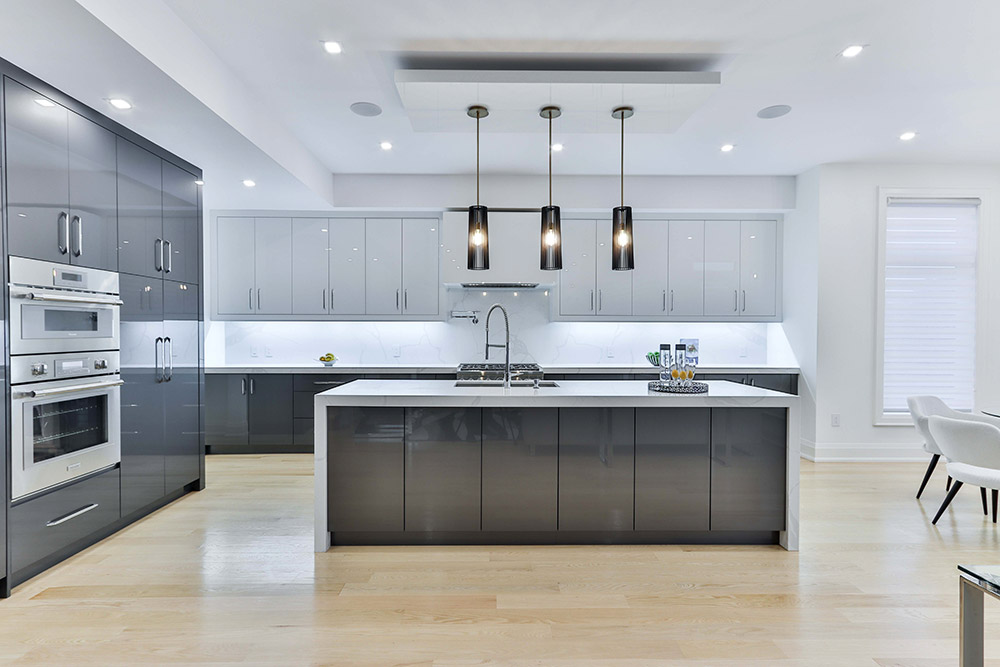Welcome to CondoCosmetics INC.
Welcome to CondoCosmetics INC.
Features of Quality Kitchen Cabinets

Ideally, high-quality kitchen cabinets should look beautiful for at least twenty or thirty years while still serving as a useful and convenient storage source. However, most of the population experienced cabinet troubles far earlier, with complaints of misaligned doors, drooping, disintegrating drawers, scratched and dented surfaces, sloppy hinges, and warped boxes. Because of poor cabinet construction, several issues arise. Low-quality kitchen cabinets not only cause problems for homeowners in terms of functionality and aesthetics, but they also result in higher-than-expected expenditures for installation and maintenance. These qualities of well-built, high-quality cabinets should be sought out to save money and time in the long run.
Plywood or particle board are commonly used in the construction of cabinet boxes. Quality kitchen cabinets with full plywood sides and backs are the most durable because they maintain their squareness during delivery and installation, support hefty counters, and are less susceptible to moisture damage. Particleboard is a less expensive option than hardwood. Moisture and crushing, and difficult-to-repair blowouts at screws and joints are all threats to its integrity.
Durability and ease of installation are both impacted by the cabinet back construction. It is best to utilize a (3/8-inch or larger) full-plywood, entire back panel for the strongest cabinet construction. Thin panels, metal hang rails and brackets, rails, and picture-frame construction are also less expensive alternatives. Cabinets can fall if the rear panels are weak. To ensure your kitchen cabinets are stable and precise, go with a plywood back construction.
You can’t open and close a cabinet door without cabinet hinges, vital parts of any kitchen cabinet. When hinges are subpar, they might result indoors that are not easy to open or close, and in some cases, doors that don’t open at all. The soft-close mechanism is integrated within a high-quality cabinet hinge’s nickel-plated, hardened steel hinge. Adjustable hinges are needed to shift the hinges when the cabinet doors expand or contract with the seasons.
Your drawer glides (slides) must be made of high-quality materials so that they can withstand years of heavy use. Heavy-duty drawer glides become increasingly important as the weight of your drawers increases. Sagging, loose, or stuck cabinet drawers could be caused by weak drawer glides.
The soft-close drawer glides should extend to the full depth of the drawer, allowing complete access to the contents. Steel guides and ball bearings ensure quiet operation and extended life. The drawer glides, installed beneath the drawer box, should have a weight capacity of at least 90 pounds. When the drawer is opened and closed, the soft-close (anti-slam) dampening system on the glides will make the operation virtually silent.
If the front faces of your drawers are falling off or your drawers are bending and bowing, you may want to upgrade to a better drawer box. In lower-end kitchen cabinetry, the drawer boxes and joints are the first to give way. Staples and notched butt joints used in lower-quality construction do not have the same strength as dovetail joints, which are machined to incorporate interlocking teeth on the drawer box edges.
The front of a framed cabinet is framed with a piece of solid hardwood. Attached to the frame are the door and drawer hinges and glides. Frame less cabinets have doors linked directly to the cabinet’s sides rather than a frame. Aside from their look, the two ways of construction differ greatly in terms of their strength and stability. Frame less quality kitchen cabinets are often more expensive to install than their framed counterparts.
Many sizes, designs, and special features can be included in custom-made cabinets to meet your kitchen’s specific requirements and available space. Stock cabinet makers give too few options, yet fully custom cabinet makers are out of reach for most people’s budgets. Semi-custom cabinets with customization are available.
A wide variety of sizes, styles, and specialized cabinets can be found in semi-custom cabinetry with alterations. By starting with a basic cabinet line, the manufacturer can reduce production costs and create each kitchen to order. It is possible to customize quality kitchen cabinets to a great extent through modifications, although this is limited to certain cabinet units only.
All basic cabinet boxes can be modified to incorporate up to 1/8-inch increments in cabinet box sizes, beadboard finishes, beadboard interiors, glass-ready doors, storage units, angled end cabinets, and other non-conventional purposes. These alternatives allow an expert kitchen designer to give you a lot of control over your kitchen’s look and feel.